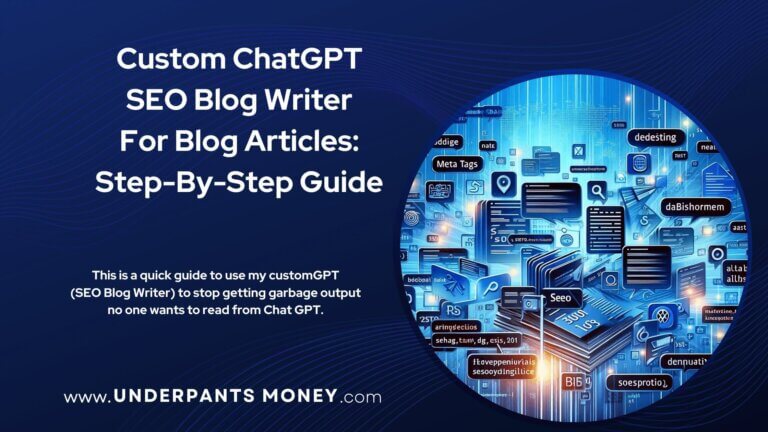How To Start Selling On Etsy: A Beginner’s Guide To Etsy Success In 2024

Welcome to my beginner’s guide on how to start selling on Etsy! If you’re a creative individual looking to turn your passion into profit, Etsy is the perfect platform for you. As one of the largest online marketplaces for handmade goods, vintage products, and art supplies, Etsy offers a unique opportunity to showcase your creativity and connect with millions of potential customers.
Selling on Etsy has many advantages. Not only does it provide a large customer base with over 500 million site visitors per month, but it also offers low fees compared to other online marketplaces. You can create customized products, target niche markets, and enjoy the flexibility of managing your own shop. Whether you’re an artist, a craftsman, or a vintage enthusiast, Etsy has a place for you.
How To Start Selling On Etsy?
To get started on Etsy, the first step is to create a seller account. Simply visit the Etsy website and click on the “Sell On Etsy” button. You will then be guided through the process of setting up your shop preferences, such as language, country, and currency. Once your account is created, it’s time to create your Etsy shop and start listing your products. Don’t worry, I’ll walk you through the entire process!

Key Takeaways
- Starting an Etsy shop allows you to sell your unique handmade goods, vintage items, art supplies, and digital products to millions of potential customers.
- Etsy is a popular online marketplace with low fees, customization options, and targeted niche markets.
- To get started, you need to create a seller account and set up your shop preferences on Etsy.
- Having a strong brand, conducting product research, and utilizing resources and mentorship are key factors for Etsy success.
- Remember to prioritize customer satisfaction, continuously improve your products, and stay dedicated to your Etsy business.
Why You Should Consider Selling on Etsy
If you’re looking to start an online business, Etsy is a platform that offers numerous advantages for sellers. With its large customer base and low fees, it’s a popular choice for individuals who want to showcase their handmade products or sell customized items. Here are some key reasons why you should consider selling on Etsy:
1. Extensive Customer Base
Etsy draws in over 500 million site visitors per month, providing a vast pool of potential customers. With 65% of these visitors coming from the U.S. alone, you have the opportunity to tap into a significant market. This high volume of traffic increases your chances of gaining exposure and making sales.
2. Low Fees
Etsy’s fee structure is straightforward and cost-effective. Unlike some other online marketplaces, Etsy doesn’t charge monthly subscription fees. Instead, they only deduct a small fee when you make a sale or list a product. This makes it easier for sellers to manage their expenses and maximize their profits.
3. Customization Options
Etsy emphasizes the value of handcrafted and customized products. As a seller, you can showcase your creativity by offering unique and personalized items to your customers. This focus on customization sets Etsy apart from other platforms and allows you to stand out in a crowded marketplace.
“Etsy’s emphasis on customization gives sellers the opportunity to create unique and personalized products.”
4. Targeted Niche Markets
One of the strengths of Etsy is its ability to cater to specific niche markets. If you have a niche product or target a niche audience, Etsy provides the tools and support to help you reach your desired customer base. By focusing on a particular niche, you can connect with customers who have a genuine interest in your offerings.
To sum up, Etsy offers a platform with a large customer base, low fees, customization options, and targeted niche markets. Whether you’re a maker, crafter, or artist, Etsy provides the ideal environment to showcase and sell your unique creations.
What Can You Sell on Etsy
On Etsy, you can sell a variety of handmade goods, vintage items, and craft supplies. But, my personal favorite is selling digital products. They have low overhead cost and can have a higher profit margin. Plus you only need to create it once and you can sell a product multiple times.
With more than 15 top-level categories and over 3,200 subcategories, Etsy offers a wide range of options for sellers. Whether you create your own handmade products or curate vintage items, you can find a place on Etsy to sell your unique offerings.
- Handmade Products: If you have a creative flair and enjoy crafting, Etsy is the perfect platform to showcase your handmade creations. From jewelry and clothing to home decor and art, the possibilities are endless. You can sell one-of-a-kind items or offer custom-made products to cater to your customers’ preferences.
- Vintage Items: If you have a passion for vintage treasures, Etsy is an ideal marketplace to sell your collection. Vintage clothing, antique furniture, retro decor, and nostalgic memorabilia are just a few examples of the vintage items that can find a new home on Etsy.
- Digital Products: For those skilled in digital design, Etsy offers a market for digital products like printable art, planners, and templates. These items have no shipping costs and provide instant access for customers. Create once, sell multiple times – a great opportunity for digital creatives.
- Craft Supplies: If you’re an artist or a DIY enthusiast, Etsy is a great place to sell your craft supplies. Whether you create handmade paper, unique beads, or specialty yarn, there are buyers on Etsy who are eager to purchase high-quality materials for their own creative projects.
When selling on Etsy, it’s important to conduct thorough product research and identify popular and in-demand items within your chosen niche. This will increase your chances of making sales and attracting potential customers to your shop.
Examples of What You Can Sell on Etsy
| Category | Subcategories |
|---|---|
| Handmade | Jewelry, Clothing, Home Decor, Artwork, Accessories |
| Vintage | Clothing, Furniture, Home Decor, Collectibles, Jewelry |
| Digital Products | Planners, Art, Workbooks, Spreadsheets, Cards, E-Books, Labels, Graphics |
| Craft Supplies | Painting Supplies, Scrapbooking Supplies, Knitting Supplies, Jewelry-Making Supplies, Paper Making Supplies |
As you can see, there are numerous possibilities for what you can sell on Etsy. So, let your creativity soar and take advantage of the diverse marketplace that Etsy offers to showcase your unique products and reach a wide audience of potential customers.
Setting Up Your Etsy Shop
To start selling on Etsy, you need to create a seller account and set up your shop. Follow these steps to get started:
- Visit Etsy’s seller page and click on “Get started” to begin the registration process.
- Enter your email address, name, and password to create an account.
- Once registered, you can proceed to open your Etsy shop.
- Provide your shop preferences, including language, country, and currency.
- Choose a unique shop name that represents your brand.
- Complete the billing and shop security setup.
- It’s recommended to upload at least 10 listings when opening your Etsy shop to attract potential customers.
- Customize your shop by adding a customized banner, shop owner information, and featured items to make your shop stand out.

Tips for Finding Your Profitable Niche on Etsy
Finding a profitable niche is crucial for Etsy success. To increase searchability and target a specific audience, I recommend narrowing down your niche. Conduct thorough market research on Etsy by browsing through multiple categories and analyzing what other successful sellers are offering.
- Look for product ideas that catch your eye and consider if you can create similar or improved versions.
- Pay attention to review counts and recent reviews to gauge product popularity.
- Consider your own skills, hobbies, and interests that could translate into a thriving Etsy business.
Once you have a few potential niche ideas, search for them on Etsy to see if there is demand and competition. This will give you a better understanding of the market and help you make informed decisions about which niche to pursue.
Remember, finding a profitable niche requires careful consideration and market analysis. Don’t be afraid to think outside the box and offer unique products that cater to a specific customer base. Differentiate yourself from the competition and provide value to your target audience.
By finding your profitable niche on Etsy, you’ll be able to attract the right customers, stand out among competitors, and increase your chances of making sales on the platform.
Verifying the Demand for Your Products
Before listing your products on Etsy, it’s crucial to verify the demand for them. This ensures that you invest your time and effort into selling items that customers are actively searching for. There are a few strategies you can use to determine the demand for your products.
Utilize Google Trends
One effective tool to assess the popularity of specific keywords over time is Google Trends. By searching for your product and examining its popularity within the past 12 months or 5 years, you can gain insights into its market demand. If you notice a consistent growth in popularity, it indicates a potentially lucrative product.
Research Similar Products on Etsy and Other Platforms
Another strategy for verifying demand is to search for similar products on Etsy and other platforms like Amazon Handmade. This allows you to evaluate the competition and see if there is already a market for your product. Look for products with a strong sales history and high review counts as indicators of successful demand.
“By researching the competition, you can identify opportunities to offer a better quality product or provide additional customization, making your offerings stand out.”
Consider Unique Selling Points
When evaluating the demand for your products, consider how you can differentiate yourself from the competition. Identify unique selling points that set your offerings apart and appeal to customers. For example, if similar products lack customization options, you can provide personalized variations to cater to specific customer preferences.
By performing thorough research and analyzing market demand, you can make informed decisions about the products you choose to sell on Etsy. This will increase your chances of success and help you tailor your offerings to what customers are actively seeking.
Integrating Print-On-Demand Services
If you want to offer customized products without the hassle of inventory management, consider integrating a print-on-demand service with your Etsy shop. Print-on-demand services allow you to create and sell products with your designs without the need for upfront inventory or production costs.
Research and choose a print-on-demand provider that aligns with your product offerings and integrates seamlessly with Etsy. By partnering with a print-on-demand service, you can expand your product offerings and cater to a wider range of customer preferences.
The Benefits of Print-On-Demand Services
Print-on-demand services offer several advantages for Etsy sellers:
- No inventory management: With print-on-demand, you don’t have to worry about storing and managing inventory. The service takes care of production and shipping, allowing you to focus on other aspects of your business.
- Customization options: Print-on-demand services allow you to create unique designs and offer personalized products to your customers. This customization can help you stand out in the crowded marketplace and attract more buyers.
- Low upfront costs: Since you don’t have to invest in inventory upfront, print-on-demand services eliminate the need for large financial investments. This makes it a cost-effective option, especially for small businesses and creative entrepreneurs.
- Scalability: Print-on-demand services can handle large order volumes, allowing you to scale your business without the constraints of inventory management. Whether you receive one order or a hundred, the service can accommodate your needs.
Choosing the Right Print-On-Demand Provider
When selecting a print-on-demand provider for your Etsy shop, consider the following factors:
- Integration with Etsy: Ensure that the provider seamlessly integrates with Etsy, allowing you to sync your products, orders, and inventory efficiently.
- Quality and range of products: Look for a provider that offers high-quality products that align with your niche and target audience. Whether you’re selling clothing, accessories, home decor, or stationery, choose a provider that can deliver the products your customers will love.
- Pricing and profit margins: Compare the pricing structures and profit margins of different providers to ensure that you can maintain a healthy profit while offering competitive prices.
- Shipping options: Consider the shipping options and delivery times offered by the print-on-demand provider. Fast and reliable shipping is crucial for providing a positive customer experience.
- Customer support: Evaluate the level of customer support provided by the print-on-demand service. Prompt and helpful support can be invaluable when issues or questions arise.
Integrating Print-On-Demand with Your Etsy Shop
Once you’ve chosen a print-on-demand provider, follow the specific instructions provided to link your print-on-demand account to your Etsy shop successfully. This integration will allow you to seamlessly manage your products, orders, and inventory on both platforms.
Remember to regularly update your product listings with new designs, monitor sales and customer feedback, and adapt your offerings based on market demand.

| Print-On-Demand Provider | Integration with Etsy | Product Range | Pricing | Shipping Options | Customer Support |
|---|---|---|---|---|---|
| Printful | Yes | Over 320 products including clothing and home decor | Products start from $9.25, reasonable profit margins | International shipping within 20 business days, free shipping on orders over $500 | 4-week return and refund policy, 24/7 customer support |
| Printify | Yes | Over 750 products including clothing, accessories, and home goods | Products start from $8.60, free plan or $24.99/month premium plan, good profit margins | Worldwide shipping within 15-20 business days | Merchant refund policy and customer service provided |
| Gelato | Yes | Wide range including apparel, stationery, wall art | Products start from $8.51, free plan or paid plans for additional features, high profit margins | Ships to over 200 countries within 15 business days | Offers a 30-day refund policy, with customer support |
Building a Strong Brand for Your Etsy Shop
Building a strong brand for your Etsy shop is key to attracting customers and establishing trust. A well-defined brand sets you apart from the competition and creates a memorable shopping experience. Here are some Etsy seller tips to help you build a strong brand for your shop. You can always do Etsy shop optimization later, but you should have some of this done as part of your Etsy shop setup process.
1. Shop Brand Kit
Consider using a shop brand kit to maintain a cohesive and professional brand appearance. A brand kit typically includes elements like size charts, color charts, logos, and banner templates. Having these elements in place ensures consistency across your shop’s visuals and reinforces your brand identity. Take advantage of branding tutorials within the shop brand kit to create a visually appealing Etsy shop that reflects your unique style.
2. Customize Your Profile and Banner
A personalized profile and banner can make a lasting impression on potential customers. Use your profile to introduce yourself or your business, sharing a bit of background information that highlights your expertise or passion for your products. Customize your banner photos to showcase your best-selling items or represent the overall aesthetic of your brand. Creating a visually appealing profile and banner helps establish a connection with your target audience.
3. Upload Your Shop Policies
Your shop policies play a crucial role in reinforcing a positive customer experience. Upload clear and concise shop policies that outline your return and exchange procedures, shipping details, and any other relevant information. By providing transparency and clarity, you build trust with customers and ensure they have a seamless shopping experience. A satisfied customer is more likely to become a repeat customer and refer your shop to others.
4. Stand Out with Unique Product Descriptions
When creating product descriptions, focus on showcasing what makes your products unique. Highlight the craftsmanship, materials used, and any special features that set your products apart. Use persuasive language and storytelling techniques to engage potential customers and make them feel a connection to your products. Incorporate relevant keywords naturally in your descriptions to improve visibility in Etsy’s search results.
5. Prioritize Consistent Branding
Consistency is key when it comes to branding. Ensure that your brand elements, such as logos, fonts, colors, and product photography style, remain consistent across your Etsy shop. This helps create a cohesive shopping experience and strengthens your brand recognition. Consistent branding also fosters trust and reliability, making customers more likely to choose your products over competitors.

Remember, building a strong brand takes time and continuous effort. Stay true to your brand’s values and maintain consistency in all aspects of your Etsy shop. By implementing these strategies, you can enhance your shop’s visibility, attract loyal customers, and achieve Etsy shop success.
Utilizing Resources and Mentorship for Etsy Success
Starting an Etsy business can be overwhelming, but there are plenty of resources and mentorship opportunities available to help you succeed. Join Etsy seller Facebook groups, participate in online tutorials and guides, and seek advice from experienced sellers. Take advantage of free resources provided by Etsy and other online platforms to gain valuable insights and knowledge. Networking with fellow sellers and learning from their experiences can save you time and offer support as you navigate the Etsy marketplace. Remember to utilize these resources to make the most of your Etsy business and increase your chances of success.
Mentorship and Community
One of the best ways to gain insights and support for your Etsy business is by connecting with other sellers through mentorship programs and online communities. Etsy seller Facebook groups, such as “Etsy Sellers United” or “Etsy Success,” provide a platform for discussing ideas, asking questions, and learning from experienced sellers. Engaging with these communities not only helps you stay updated with the latest trends and strategies but also provides a support system of like-minded entrepreneurs.
Online Tutorials and Guides
Etsy offers a wealth of free resources to help sellers succeed. Explore the Etsy Seller Handbook, which provides in-depth tutorials, guides, and tips on various aspects of running a successful Etsy shop. From photography and product descriptions to SEO optimization and marketing strategies, these resources cover a wide range of topics to help you enhance your shop’s visibility and attract more customers.
Seeking Advice from Experienced Sellers
A valuable source of guidance and inspiration is seeking advice directly from experienced sellers in your niche. Reach out to successful Etsy sellers whose work you admire or who have achieved the level of success you aspire to. Politely ask if they would be willing to answer a few questions or provide guidance on specific areas of your business. Personalized advice from someone who has been where you are can offer invaluable insights and tips to help you overcome challenges and take your Etsy shop to the next level.
“Networking with fellow sellers and learning from their experiences can save you time and offer support as you navigate the Etsy marketplace.”
Expanding Your Knowledge Base
In addition to Etsy-specific resources, there are several online platforms and courses dedicated to helping sellers succeed in the ecommerce industry. Websites like Skillshare and Udemy offer a wide range of courses on topics like Etsy SEO, product photography, and social media marketing. These courses can provide you with valuable skills and knowledge to optimize your Etsy shop and drive more sales.
Attending Virtual Workshops and Conferences
Virtual workshops and conferences are another excellent way to gain insights from industry experts and connect with other sellers. Keep an eye out for virtual events hosted by Etsy or third-party organizations that focus on topics relevant to your Etsy business. These events often feature keynote speakers, breakout sessions, and networking opportunities that can broaden your perspective and introduce you to new strategies for success.
| Advantages of Mentorship and Resources | Benefits |
|---|---|
| Networking and Support | Access to a community of like-minded sellers and mentors who can share insights, advice, and support throughout your Etsy journey. |
| Knowledge and Insights | Access to a wealth of free resources, tutorials, and guides to enhance your skills and knowledge in areas such as branding, marketing, and customer engagement. |
| Personalized Guidance | Opportunity to seek advice and guidance from experienced sellers who can provide personalized insights and tips based on their own success stories. |
| Continuous Learning | Access to online courses, workshops, and conferences that expand your knowledge base and keep you updated with the latest industry trends and strategies. |
By utilizing the available resources and mentorship opportunities, you can leverage the knowledge and experiences of others to overcome challenges, refine your strategies, and ultimately achieve success in your Etsy business.
Wrap Up
Congratulations on completing this beginner’s guide to selling on Etsy. Starting your first successful Etsy shop can be a fun an exciting experience! By following these Etsy selling tips and available resources, you are well on your way to turning your passion into profit.
Finding your profitable niche is key. By identifying a specific audience and offering unique products within your chosen category, you can stand out in the competitive Etsy marketplace. Creating a strong brand, with a cohesive and visually appealing shop, will help you establish trust and attract customers.
Customizing your shop and prioritizing customer satisfaction are also crucial. Take advantage of the customization options Etsy provides to make your shop unique and memorable. And always strive to provide exceptional customer service, as positive experiences lead to repeat business and positive reviews.
Remember, this was only selling on Etsy 101, and there is still a lot to learn. Starting an Etsy business requires dedication and continuous learning, but with the right strategies and perseverance, you can achieve Etsy success. Best of luck as you embark on your Etsy journey, and may your shop flourish and thrive!
FAQ
How do I get started on Etsy?
To sell on Etsy, sign up for a seller account, set your shop preferences, and choose a shop name. Complete the account registration, then set up your shop by providing necessary details like language, country, and currency. Finally, complete the billing and shop security setup to start selling.
What can I sell on Etsy?
On Etsy, you can sell handmade products, vintage items at least 20 years old, craft supplies, and digital products. Research the market to understand what items are popular and in-demand. Ensure your products align with Etsy’s guidelines for these categories.
How can I find a profitable niche on Etsy?
To find a profitable niche on Etsy, conduct thorough market research and focus on a specific category. Look at current trends, competitor offerings, and customer reviews to gauge demand. Choose a niche that aligns with your interests and abilities for the best chance of success.
How can I verify the demand for my products on Etsy?
To verify demand, use tools like Google Trends to track the popularity of keywords related to your products. Analyze the performance of similar items on Etsy and other platforms. Look for high sales and review counts as indicators of demand and competition.
Can I integrate print-on-demand services with my Etsy shop?
Yes, you can integrate print-on-demand services with your Etsy shop. This allows you to sell custom products without holding inventory. Research and choose a provider that offers seamless integration with Etsy and aligns with your product vision.
How can I build a strong brand for my Etsy shop?
Build a strong Etsy brand by developing a unique and cohesive visual identity. Use a brand kit to create consistent designs and provide clear shop policies to enhance customer trust. Personalize your shop with a detailed profile and background information about your products.
What resources and mentorship opportunities are available for Etsy success?
For Etsy success, utilize online resources such as seller guides, tutorials, and Etsy seller Facebook groups. Networking with experienced sellers and participating in community discussions can provide valuable insights. Leverage these resources to learn from others’ experiences and grow your Etsy business.






